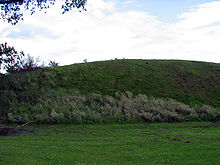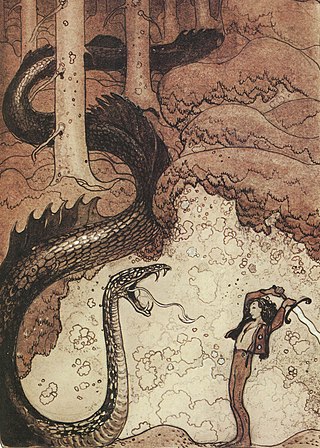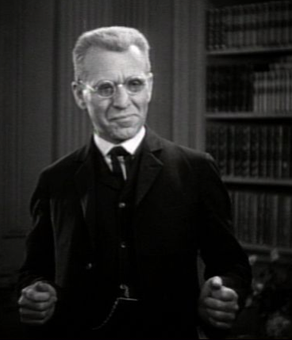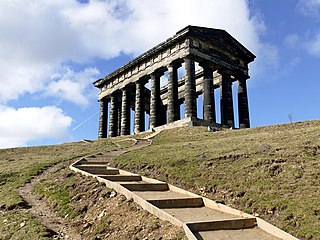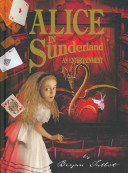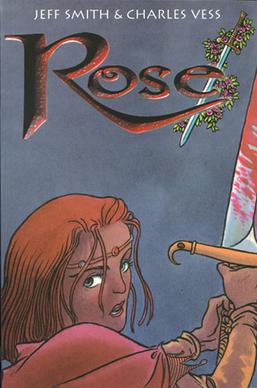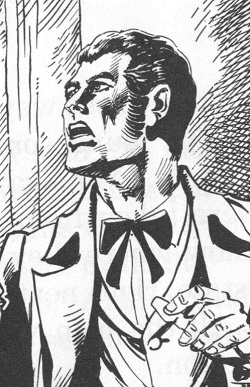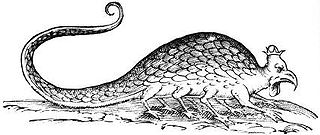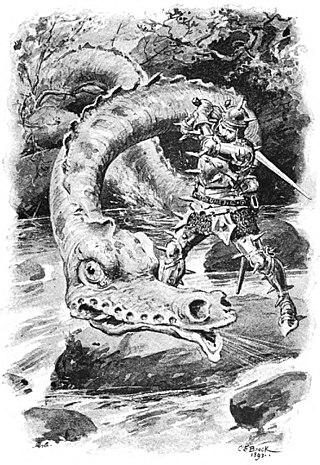| One Sunda morn young Lambton went |
| A-fishing in the Wear; |
| An' catched a fish upon he's heuk | (=caught) (=his hook) |
| He thowt leuk't vary queer. | (=thought looked very strange) |
| But whatt'n a kind ov fish it was | (=what kind of) |
| Young Lambton cudden't tell- |
| He waddn't fash te carry'd hyem, | (=could not be bothered to carry it home) |
| So he hoyed it doon a well | (=threw it down) |
|
| (Chorus) |
| Whisht! lads, haad yor gobs, | (=Hey boys, be quiet) |
| An' aa'll tell ye aall an aaful story, | (=I'll tell you all an awful) |
| Whisht! lads, haad yor gobs, |
| An' Aa'll tel ye 'boot the worm. | (=about) |
|
| Noo Lambton felt inclined te gan | (=go) |
| An' fight i' foreign wars. |
| He joined a troop ov Knights that cared |
| For nowther woonds nor scars, | (=neither wounds) |
| An' off he went te Palestine |
| Where queer things him befel, |
| An varry seun forgat aboot | (=very soon forgot about) |
| The queer worm i' tha well. |
|
| (Chorus) |
|
| But the worm got fat an' grewed an' grewed, |
| An' grewed an aaful size; |
| He'd greet big teeth, a greet big gob, |
| An greet big goggly eyes. |
| An' when at neets he craaled aboot | (=nights) (=crawled around) |
| Te pick up bits o' news, |
| If he felt dry upon the road, |
| He'd milk a dozen coos. | (=cows) |
|
| (Chorus) |
|
| This feorful worm would often feed | (=fearful) |
| On caalves an' lambs an' sheep, |
| An' swally little bairns alive | (=swallow) (=children) |
| When they laid doon te sleep. |
| An when he'd eaten aall he cud | (=all he could) |
| An' he'd had he's fill, |
| He craaled away an' lapped he's tail | (=wrapped) |
| Ten times roond Pensha Hill. | (=Penshaw Hill, a local landmark) |
|
| (Chorus) |
|
| The news ov this myest aaful worm | (=most) |
| An' his queer gannins on | (=goings-on) |
| Seun crossed the seas, gat te the ears | (=soon) (=got to) |
| Ov brave an' bowld Sor John. | (=bold) |
| So hyem he cam an' catched the beast, | (=home he came and caught) |
| An' cut 'im in three halves, [14] | |
| An' that seun stopped hes eatin' bairns |
| An' sheep an' lambs an' caalves. |
|
| (Chorus) |
|
| So noo ye knaa hoo aall the foaks | (=now you know how all the folk) |
| On byeth sides ov the Wear | (=both) |
| Lost lots o' sheep an' lots o' sleep |
| An leeved i' mortal feor. | (=And lived in mortal fear) |
| So let's hev one te brave Sor John | (=let's drink to brave Sir John) |
| That kept the bairns frae harm, | (=from) |
| Saved coos an' calves by myekin' haalves | (=making halves) |
| O' the famis Lambton Worm. | (=famous) |
|
| (Final Chorus) |
| Noo lads, Aa’ll haad me gob, | (=I'll hold my mouth. Stop speaking) |
| That's aall Aa knaa aboot the story | (=All I know about) |
|
| Of Sir John's clivvor job | (=clever) |
| Wi’ the aaful Lambton Worm. |


